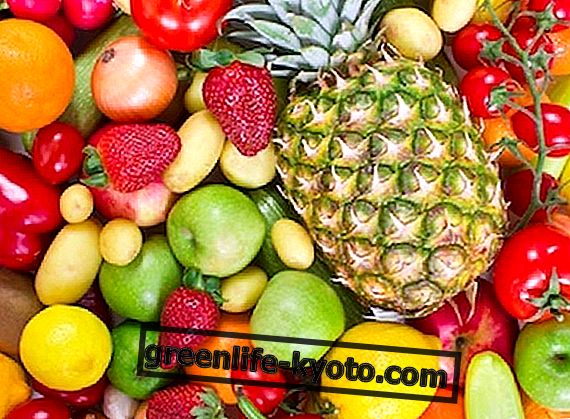
How to drink absinthe
Magic grass, Green Fairy that kept demons away, ancient mother of all plants, wormwood or Artemisia Absinthium (different from Artemisia Vulgaris ) has always been considered the remedy of women, used above all to regularize the menstrual cycle . Its invigorating action on the body is very important, even more so if you think how much it stimulates the functions related to the stomach and digestion .
The bitter principle of this herb, the absintin, would also be able to help the work of the spleen, gall bladder and liver. The other principle, the tujone, has made absinthe a plant that has always been much criticized, by virtue of its toxicity.
Let's see the various ways you can drink absinthe.
Absinthe in herbal tea
The wormwood infusion or herbal tea is prepared by soaking a teaspoon of flowering tops, flowers and leaves or dried aerial parts in a cup filled with boiling water for about 10 minutes.
Drunk about half an hour before meals, this herbal tea has aperitif functions; while if you drink after meals it can help in digestion.
Anti-inflammatory, antispasmodic and regenerating properties are also recognized and can also be used for the preparation of decoctions. The infusion of wormwood results to the very bitter taste.
Absinthe wine: be careful!
Absinthe, as in use for a long time, can also be consumed together with alcohol. Leaving aside the details about the consumption and the way of drinking the well-known alcoholic drink of the same name, famous among the French and bohemian artists of the 1800s, we talk about the home-made absinthe wine .
Absinthe recipes in various alcoholic solutions and, so the habit of preparing white wines absinthe, are widespread, often with the addition of spirits, such as grappa: be careful, do not do it, there have also been fatal cases of poisoning.
Warning: before consuming or self-producing the absinthe, consult a trusted expert or herbalist. It is in fact a plant with toxic active ingredients, of which certain doses must not be exceeded, which can even lead to convulsions, breathing difficulties, gastro-intestinal irritations or ulcers. It is also advised not to use it for long periods and cannot be taken in case of pregnancy and breastfeeding.
Curiosity: the Artemisia Absinthum is the main aromatic base in the preparation of the well-known Vermuth.
Where to find absinthe in leaves
For the preparation of the infusion or of the wormwood-based infusion the leaves, flowers and flowering tops can be found in pharmacies and in the most equipped herbalist's shops.
Dyes, capsules and hydroalcoholic extracts based on Artemisia Absinthium, as well as the plant itself , can also be found online or available on order.
Reference books and readings:
> NCBI comparative study published on PubMed regarding the differences between Artemisia absinthum and Artemisia Vulgaris
> "Absinthe" on Ortofrutticola.it
> "The plants to drink" by Piergiorgio Chiereghin.
> "The Absence of Absinthe" by Andrea G. Pinketts.












